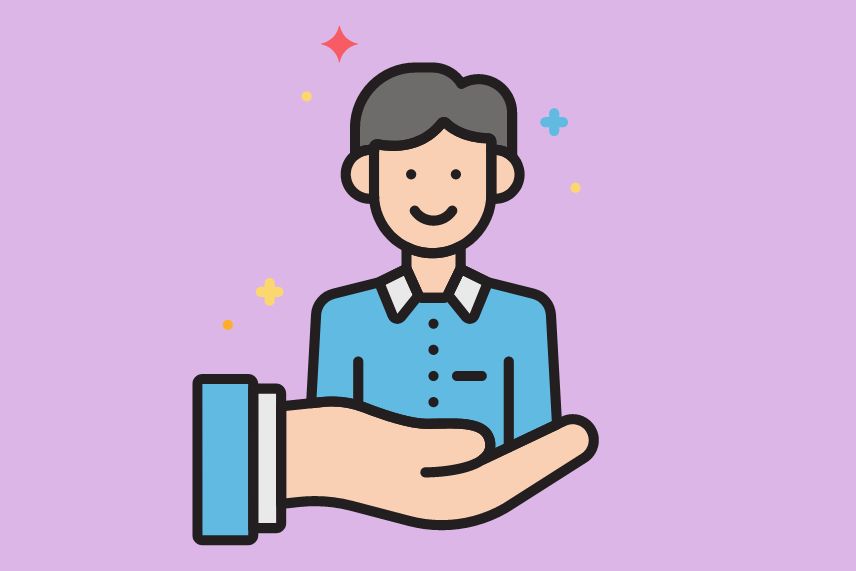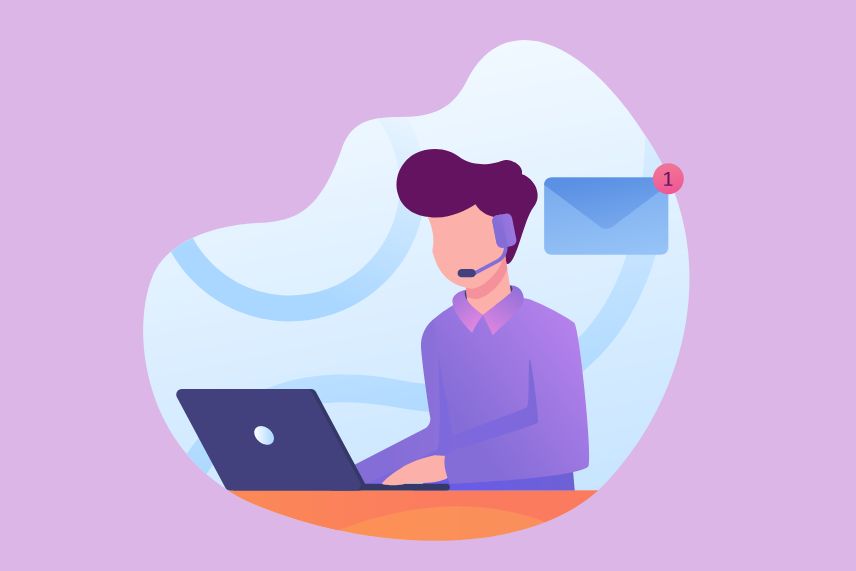Customer retention is key to any successful business. If you can keep your customers happy and engaged, they will stick around and continue doing business with you. Moreover, it’s cheaper and easier to keep a customer than to find a new one.
That’s why customer retention is necessary, and it’s one of the most effective ways to grow your business while keeping costs low.
Almost 65 percent of a company’s business comes from repeat customers, and capitalizing on them can help you cut down marketing costs while increasing profit. Nevertheless, there’s so much more to benefit from customer retention.
This guide discusses the benefits of customer retention and how to improve it in your business. You’ll also discover incredible tools to make your journey easier.
What is Customer Retention?

Customer retention is a company’s ability to retain its customers over a specified period and prevent them from switching to a competitor. High customer retention means customers often return to patronize the brand.
In contrast, a low customer retention rate implies that customers seldom return for repeat purchases after their initial interaction with a brand.
Retaining customers involves keeping them happy and engaged with your company. There are many ways to do this which we would explore in the later parts of this article.
You must provide them with quality products and services and be responsive to their needs and concerns. Providing them with exclusive deals and discounts is also part of the strategy.
Why is Customer Retention Important?
1. Reduces Customer Acquisition Cost
Did you know that it costs five times as much to acquire a new customer than it does to keep an existing one? If you’re trying to reach new customers, you have to spend money on advertising and marketing. But if you can keep your existing customer, you don’t have to spend as much because they’re already familiar with your brand.
Moreover, retained customers experience less difficulties with your product; thus, you can reduce the number of customer service issues, which saves you time and money.
2. Improves Your Product
When you retain customers, you also create a feedback loop of sorts that can help you improve your product. Let’s say you have a new feature in your product that you want to test out. You can push it out to a select group of users who you know are dedicated to using your product (aka, your retained customers) and see how they respond to it.
If they love it, then you know you’re on the right track! If they don’t, then you can quickly iterate and come up with something better before rolling it out to your entire customer base.
3. Stand Out From the Competition
In today’s day and age, different brands are vying for your customer’s attention, and it can be tough to make yours stand out. But if you have a loyal customer base that’s always coming back for more, that’s a big feather in your cap.
It shows that you’re doing something right and that people are willing to put their trust in your time and time again. So if you want to set yourself apart from the competition, focus on making your customers happy and keeping them around for the long haul.
4. Increases Brand Awareness
Customer retention can increase brand awareness through word-of-mouth marketing. When customers are happy with your product or service, they’re more likely to tell their friends and family about it. And those friends and family are more likely to become customers themselves.
Happy customers are also more likely to write positive reviews online, which can help attract new customers.
5. Increase Customer Lifetime Value
Customer lifetime value is a metric that measures the total amount of revenue a customer will generate for your business throughout their relationship with you. Generally, the longer customers stay with you, the more they spend.
Repeat customers are also more likely to spend more with your company because it serves them well. These customers are often more loyal and less price-sensitive than new customers, which means they’re more likely to continue doing business with you even if your prices go up. This can help make your company more recession-proof.
10 Ways to Improve Customer Retention
1. Improve Customer Service

If you want to improve customer retention, one of the best places to start is with your customer service. Good customer service is the key to keeping customers happy and engaged with your brand.
One way to improve your customer service is to train your employees with the adequate resources they need to do their jobs effectively. An excellent example of this resource is reliable customer help desk software. Tools like HubSpot Service Hub enables you to track and manage customer requests in one place, which can help you respond more quickly and efficiently. It also includes features like a knowledge base, which can help you resolve common issues without involving a customer service agent.
Another way to improve your customer service is to make support available round the clock. To do this, you’ll need a chatbot. Although nothing beats a personal touch when it comes to customer service, chatbots can be immensely valuable for handling minor issues.
2. Create Customer Loyalty Programs
A customer loyalty program is a system where customers can earn rewards for making purchases, referring friends, or taking other actions such as reviewing your products. These rewards can be points, discounts, or special access to product launches and events.
Customer loyalty programs improve customer retention by creating a sense of community and belonging among your customers. Moreover, customers will easily come back for more since they’re getting an incentive.
Another benefit of customer loyalty programs is that it helps you collect data about your customer’s behavior, so you can better understand their needs.
The first step to take when creating a customer loyalty program is to determine your goals for the program. For example, you may want your existing customers to increase their purchases to an average of three times per year. Next, decide what type of rewards you want to offer.
Finally, you’ll need CRM software to track purchases and other qualifying actions. Zoho CRM and Freshsales are excellent tools to try.
With this software, you can collect and store customer information, view how many points each has, and monitor how they use them. Users can even send targeted messaging to customers who have a specific number of points to encourage them to make further purchases.
3. Ask For Feedback
One of the best ways you can improve customer retention is to ask for customer feedback. After all, they’re the ones who are using your product or service, so they know better than anyone else what could be improved.
Asking for feedback is a great way to show your customers that you care about their experience with your company, and it’s also a great way to get some valuable insights that you can use to improve your business. This practice can help you reduce customer churn and increase customer lifetime value.
There are a few different ways you can go about asking for feedback. You could send out a survey, or if you have a brick-and-mortar store, you could have a comment box where customers can drop their suggestions.
You could also ask customers for feedback when making a purchase or signing up for your service. This way, you can get their unfiltered opinions and use them to improve your business.
4. Enable Customer Accounts
Customer accounts are a great way to improve customer retention. By enabling customers to create an account on your website, you can make it easy for them to track their orders, view their purchase history, and manage their account settings.
This feature improves customer retention rates as it allows for future reuse and speeds up checkouts over time. Customer accounts are ideal for returning customers who regularly visit and interact with your site.
To enable customer accounts on your website, start by setting up registration fields in your shopping cart software. Include basic information such as name, address, email, and phone number. Next, install a CRM system to track customer data and activity. Some popular available options include Salesforce, Zoho CRM, and Zendesk Sell.
Give customers the option to check out on a guest account, too, and include a “Forgot Password” link in case they need to reset their password. Finally, test the customer account system thoroughly before making it live on your website.
5. Create a Customer Referral Program
A customer referral program is when a company incentivizes its current customers to refer new customers. And there are a few different ways to do this. You can offer discounts, give away a free product, or enter them into a contest.
Customer referral programs are effective for increasing retention rates because it builds community and creates advocates for your brand.
The program motivates existing customers to promote your brand to family and friends through word-of-mouth marketing. That way, you can reach new customers you wouldn’t have had access to. This marketing strategy is responsible for 13 percent of all sales.
The first step to creating an effective customer referral program is to decide what incentive to offer. It could be a one-sided incentive or two-sided incentive, whichever one you prefer, to ensure it’s valuable enough to encourage customers to participate and prospects to pick an interest.
Next, choose a promotion channel for the program. Twitter, Facebook, and Instagram are some of the best channels to use.
6. Invest in a Customer Training Program
If your customers don’t know how to use your product, they won’t be happy with it. And if they’re unhappy with it, they won’t stick around for long. That’s why investing in a customer training program is necessary to improve customer retention.
With a customer training program, you can teach customers how to use your product and get feedback on what’s working and what’s not.
You can train your customers effectively by creating online courses for your brand or materials for customer onboarding. To create online courses for your brand, start by brainstorming topics related to your target customers’ search intents and narrow your list by focusing on specific and relevant ideas for your niche.
Next, create compelling learning outcomes; determine what you want your customers to achieve when they finish the course. After that, write your course outline and determine how to deliver your content. Video content is the most popular and engaging method to teach your customers how to use your products.
7. Promote Annual Subscriptions
Annual subscriptions have a few key benefits that make them appealing to customers. Firstly, they offer a sense of convenience and predictability. Customers know they will always have access to your product or service, and they don’t have to worry about forgetting to renew their subscription every month.
Another benefit of annual subscriptions is that they offer a sense of value. Customers feel like they get a good deal when purchasing an annual subscription at a discount.
Finally, annual subscriptions improve your average customer retention rate and customer lifetime value. Customers who subscribe for a year are more likely to stick with your brand throughout their subscription and less likely to switch to a competitor.
Promoting annual subscriptions is pretty simple. First, make the subscription option visible. Distinguish it with a bold font and shouty color m, and place it at the top of your site’s menu where it’s easy to find. Next, give customers an incentive to subscribe for a year by offering them a discount on the regular price. Finally, explain the benefits of annual subscriptions to customers, so they know what they are getting.
8. Create Compelling Content
You’ve probably heard that content is king. Perhaps it’s because it generates about three times as many leads as traditional marketing and costs 62 percent less. So it’s unsurprising that 93 percent of B2B markets rely on content marketing to boost sales.
Compelling content is a powerful tool for customer acquisition. The easiest way people find businesses online is through their content.
For example, someone suffering from tooth decay may search for a “solution for tooth decay” online and discover a “cure for tooth decay” article that explores the problem and recommend a solution. In this case, dental offices with a “cure for tooth decay” article will be more likely to attract that customer and convert them than those who don’t.
When creating content, focus on the benefits your product or service provides. Use images and videos to capture the audience’s attention and keep it concise. Remember, the aim is to convert prospects into paying customers, so incorporate solid copywriting into your content, such as a strong call-to-action.
9. Build Social Proof
Social proof can be a powerful way to improve customer retention. It’s basically when people look to others to see how they should behave in a given situation. Building social proof boots customer acquisition because it builds trust.
When potential customers see that other people have had a positive experience with your business, they’re more likely to trust you and give you a try.
Moreso, it creates a sense of community as people who see others’ pleasant experiences with your product are more likely to desire to be a part of that community.
Finally, it encourages word-of-mouth marketing: The best marketing is often word-of-mouth, and social proof can be a great way to encourage people to talk about your business with their friends and family.
There are several ways to build social proof, and one of them is customer testimonials. Ask happy customers to write a testimonial you can use on your website or social media accounts.
Another way is to write a detailed case study of a successful project or customer interaction and share it on your website or social media. Finally, if you’ve been featured in any news stories, press releases, or other media coverage, showcase it prominently on your website or social media.
10. Build a Community Around Your Product or Service
A community is a group of people with a shared interest or goal. When it comes to your product or service, your community can consist of customers, potential customers, and even employees.
Building a community around your product or service can help you get feedback and suggestions from people who are actually using your product. The community can also support new customers who are having trouble using your product. Finally, a community can be a great marketing tool—if people are positively talking about your product, that can attract new customers.
To build a large community around your product, find out where your potential customers hang out often. This could be social media platforms like Twitter or Facebook or forums and online groups related to your industry. Next, start participating in these online communities yourself. Share your expert knowledge, answer questions, and connect with potential customers.
Finally, encourage customers and employees to participate as well. You can do this by hosting events (online or offline), starting social media campaigns, or offering incentives for participation.
Final Thoughts
The bottom line is: happy customers mean repeat business and referrals. If you can keep your customers coming back, you’ll be able to cut down marketing costs and increase revenue.
Remember, your business exists for customers. Just because they’ve been with you for a while doesn’t mean they don’t have other options, so always put their interest first. Having a good customer retention rate doesn’t happen by chance. It takes hard work and dedication to give your customers what they want and need.
Author
Methodology
- Who?
We are SaaS experts: Our specialists constantly seek the most relevant information to help support your SaaS business. - Why?
We are passionate about users accessing fair SaaS pricing: We offer up-to-date pricing data, reviews, new tools, blogs and research to help you make informed SaaS pricing decisions. - How?
With accurate information: Our website manager tests each software to add a Genius Score using our rating methodology to each product. Our editorial team fact-check every piece of content we publish, and we use first-hand testing, value metrics and leading market data.
